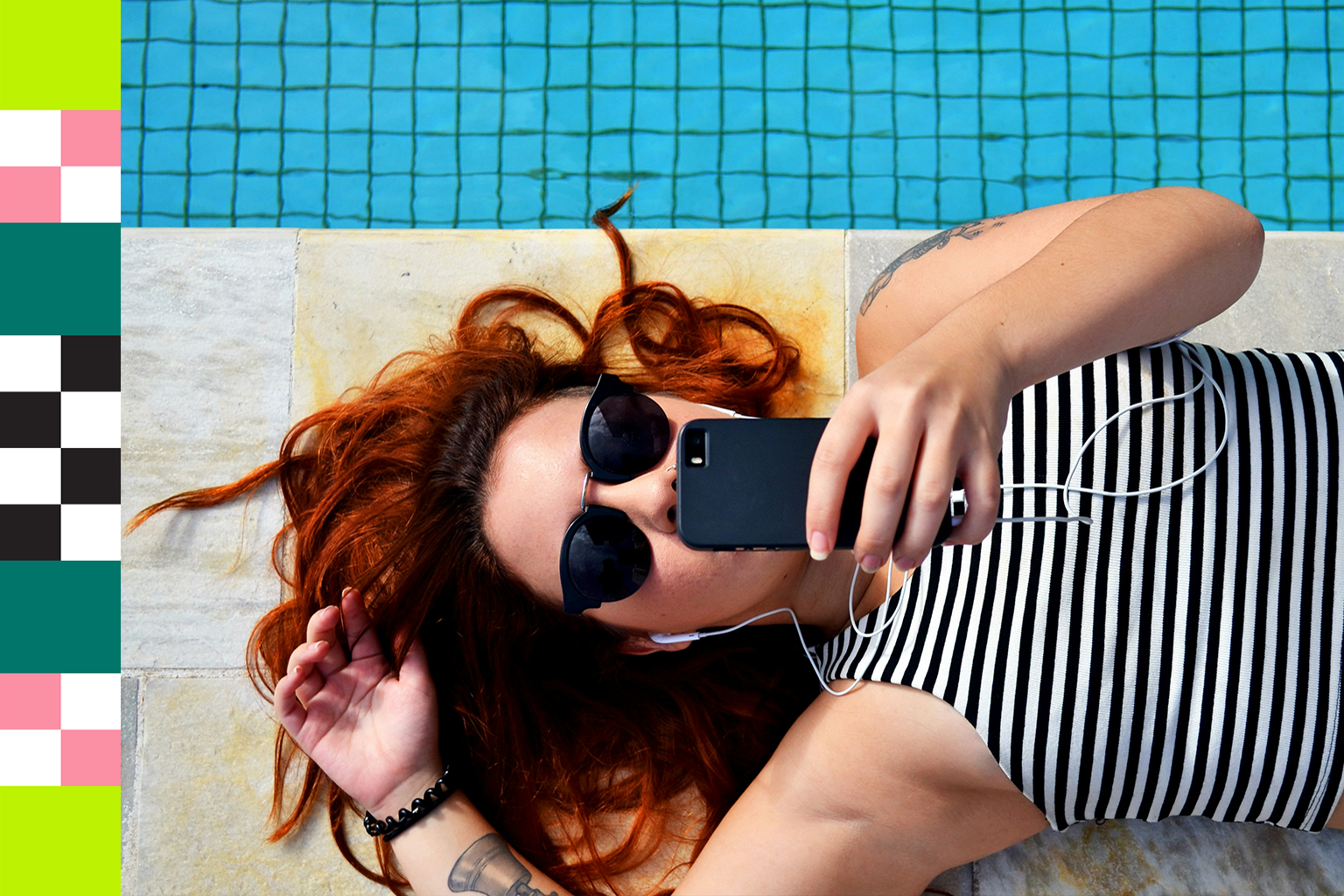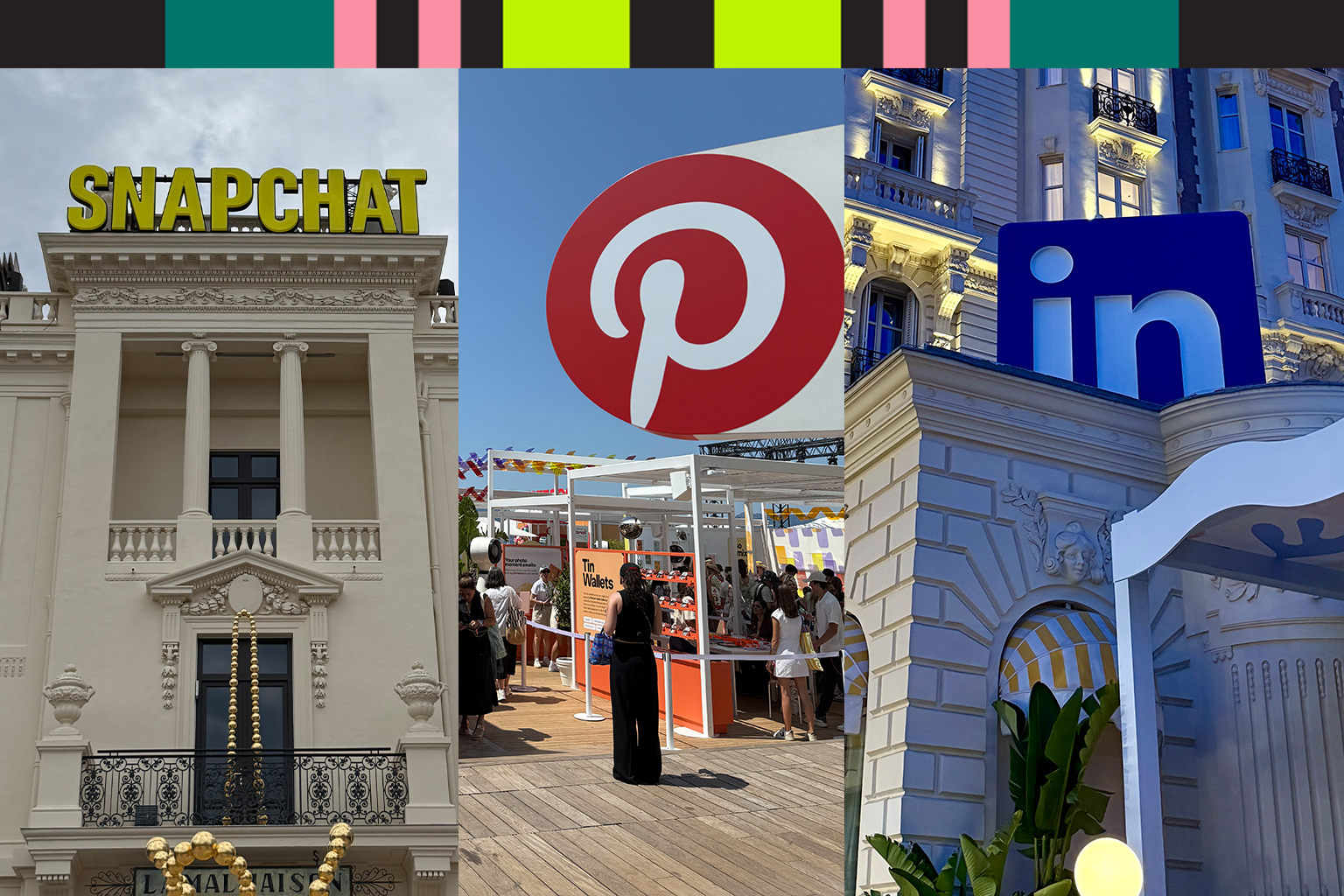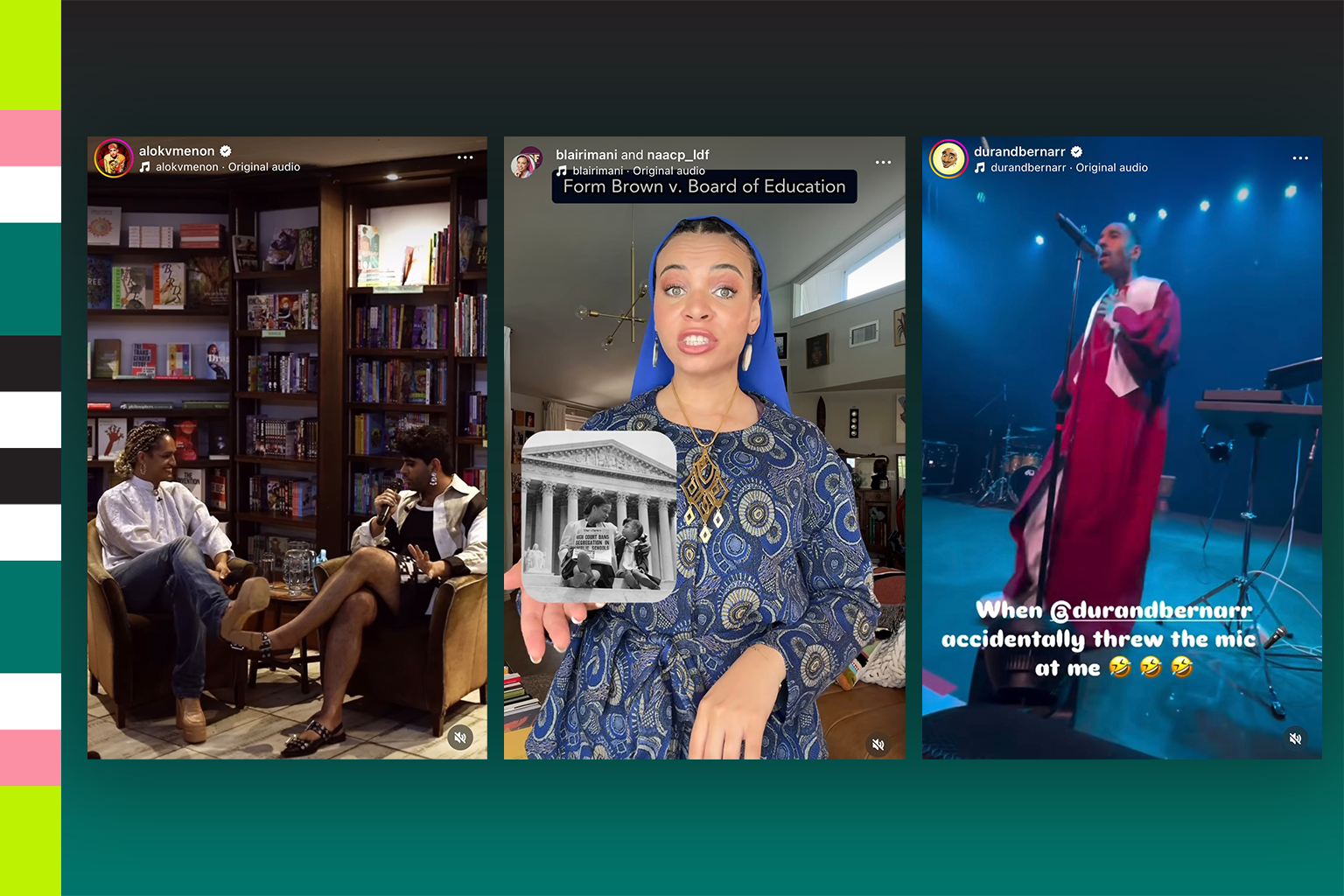CES, formerly known as the Consumer Electronics Show, is the global gathering of innovators for tech’s biggest showcase of the year. It’s two million net square feet of exhibit space – featuring 4,000 exhibits and 130,000 people gathered in the desert of Las Vegas to see the new and next.
As a social media agency we pay a lot of attention to how people connect through their technology, and we believe that AI is making CES more social. By attending this show we get a look at the near-future of where social and marketing could go — and yeah, there’s some dumb stuff, too.
A.I. Makes CES More Social
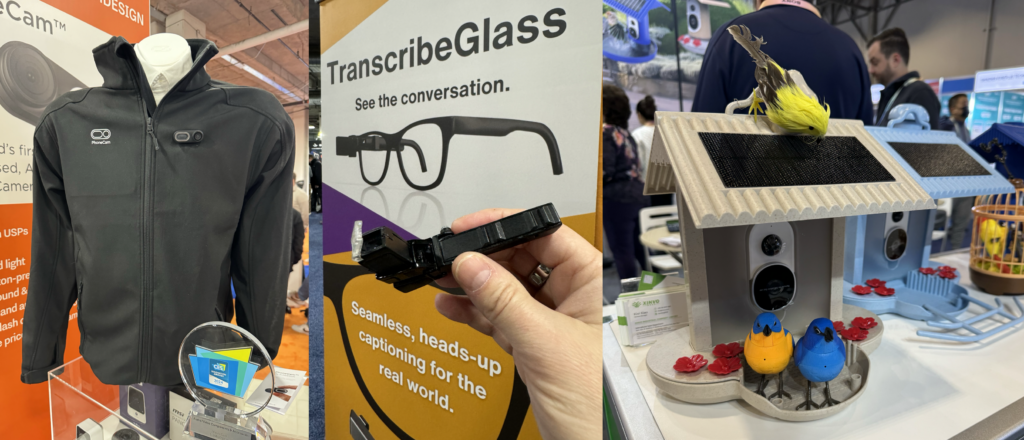
In my 16 years attending CES as an analyst and exploratory pioneer, I’ve seen the mainstream adoption of quantified self, the internet of things, personal health, VR and AR visors, and autonomous cars.
The innovations from previous CES eras, particularly those that put wifi capability and apps into everyday appliances like blenders and toasters, were waiting for the software to catch up with the hardware when it comes to utility, personalization, and shared data.
This is an inflection point for social marketers at the CES! Finally, there’s a reason your blender should have a mobile app. You can share your smoothies with your friends!
For example, adjacent to the Samsung smart refrigerators — that sense and identify the food you’ve taken out or put into your fridge – was a demo of the Samsung Food app.
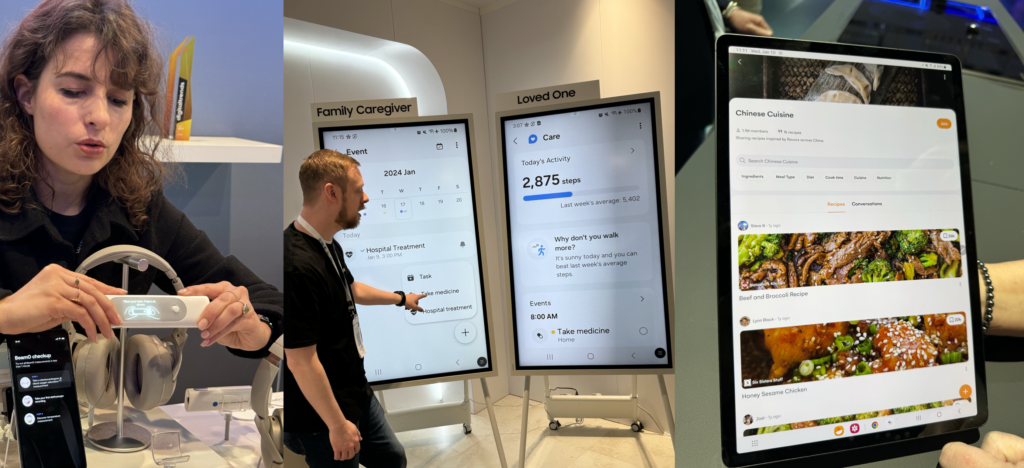
This app will scan a photo you take of the ingredients at your house and recommend a recipe, then sync that with the food (perhaps it already knows) in your fridge. Then you can modify it and share it with the community — including photos, recipe hacks, and comments. You can also take social community recipes, and your Samsung smart food ecosystem will order the ingredients you still need based on what’s on your fridge already. Now that’s social food.
Another observation of this movement is the large volume of autonomous vehicle displays that transformed dashboards into full screens so you can watch a movie, chat with friends, and surf and post on social media while your car drives itself. Time will tell if people need more screens or just their phones will suffice.
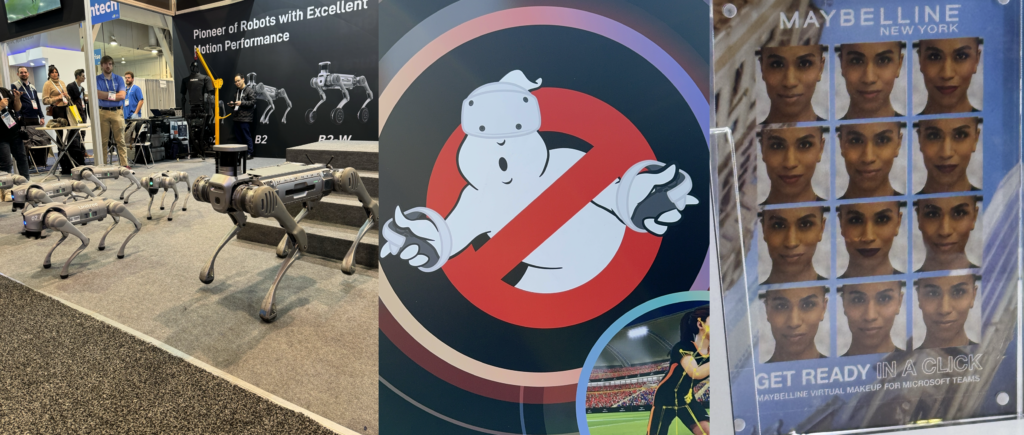
One more example is CES Innovation winner Maybelline Virtual Looks, which works as a “virtual makeup bag” feature in Microsoft Teams. It activates directly from within a Teams meeting where users choose from 12 unique styles and use a filter-like effect to reduce wrinkles or apply makeup within the platform. The company says it “saves time and allows for self-expression on work calls,” and it’s a smart brand activation into a social space that increases value for users and increases brand affinity for the company.
The Metaverse is Maturing

Speaking of initial buzz subsiding, “Metaverse” was the buzzword of CES 2023, and in 2024 there were lots of innovations toward immersive social in that emerging space – smart glasses, social worlds, spatial computing headsets, and haptic vests and gloves to “feel” in the real world what you’re doing in virtual ones.
For example, MeetKai launched its AI tool that creates monetizable, hyper-specific worlds (or enables you to build them yourself) to spin up metaverse worlds incredibly quickly – showing off examples of NBA Teams – thanks to the power and speed of A.I.
Sony was back with the second year of their Fan Engagement platform, which resembles Roblox and allows for virtual connections between fans around Manchester City today and soon more soccer clubs.
A big box store was highlighting their Roblox platform and monetized fan engagement community. Lotte featured a demo on VR and AR social shopping, and countless booths featured technology to make “digital twin scanning” cheaper and more lightweight to get more of our real world into virtual spaces.
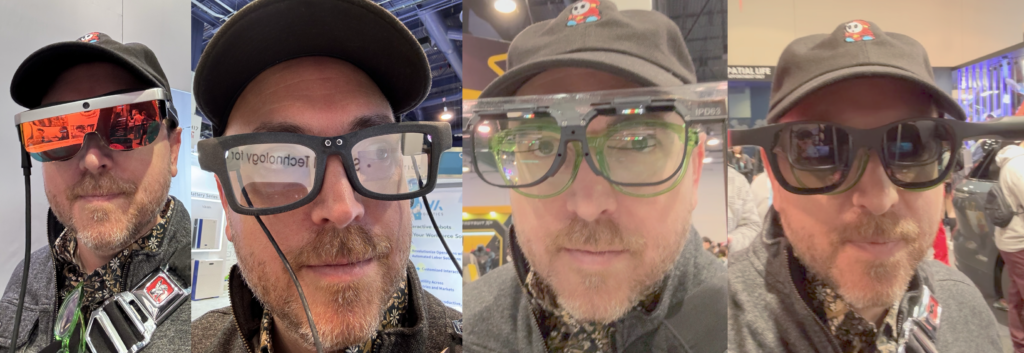
Apple’s launch of Vision Pro next month will probably be the catalyst to unlock this category in the coming year or two. The shadow of Apple loomed large over booths with full lines of people waiting to look through smart glasses that transcribe, translate, generative content, host video calls and capture (and share) content.
My First A.I. in 2024
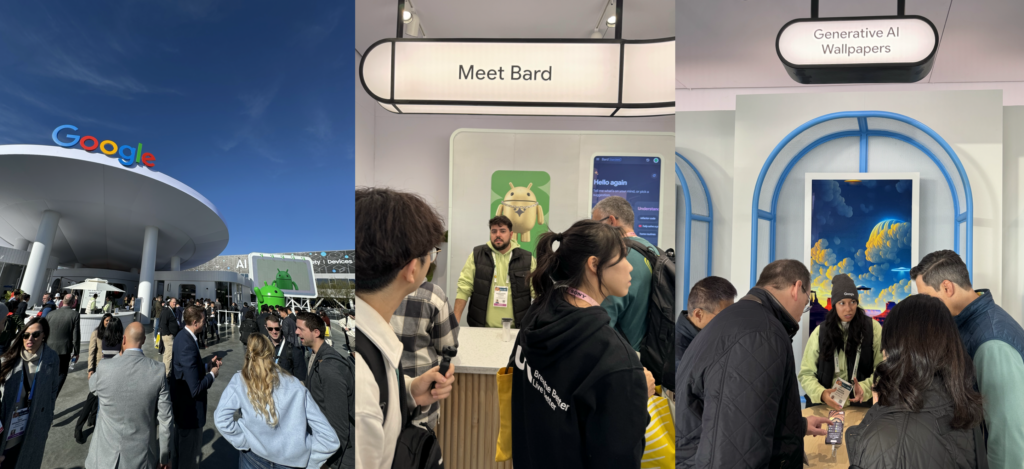
The speed of adoption of generative A.I. tools and platforms is unprecedented in our lifetime. This is why many exhibitors and companies at CES spent time educating and bringing consumers along on the journey of where we were, where we’re at, and where things are going.
For example, Google’s parking lot takeover exhibit featured stops solely devoted to explaining their Bard generative A.I. tool in one-on-one demos with attendees. Next door was a place to sit with a Google expert and create your first-ever generative wallpaper. And down the hallway was a station that let you experiment with the YouTube Create video tool, learn how to enhance your photos with A.I., and try Augmented Reality (AR) apps.
The entire experience itself featured an AR filter where the Android bugdroid mascot could skateboard across the convention hall.
The Social Hooks of OOH

Although not an official CES activation, attendees flocked to the newest global destination for advertising OOH (out-of-home): the Las Vegas Sphere. CES didn’t have an official partnership with the Sphere because it was too pricey to procure, according to an interview with Gary Shapiro, president of the Consumer Technology Association. But both Google and Intel had takeovers of the spherical ad placements each day.
Late last year the advertising rates for the $2.3 billion project were leaked – at $450,000 for the day and $650,000 for the week. Those prices include working with MSG’s 300+ designers on the creative with an estimate of 4.7 million daily impressions (300k in person; 4.4M on social).
Important to note, the social impressions are 14x those who would see it in person, and CES attendees were constantly filming the Sphere and sharing it on social. It may be an OOH experience, but it’s inherently shareable and social.

Beyond the jaw-dropping creative experience outside, inside the sphere are six A.I.-powered robots with humanoid facial features and mannerisms. At each station, the robots were interacting with attendees – including talking, asking questions, and making observations on what they heard and saw.
For example, one robot made note of a woman’s New York Yankees hat and asked if she was from New York. It was blowing people’s minds — a truly my-first-AI experience for a lot of folks.
Although the generative scripting and photo capture technology is becoming more widely available for activations like these, it used to be you had to go to a World’s Fair to have experiences that now cost $69 and are increasingly more accessible to all.
😎 The Cool!!!

Did you know there are the median, ulnar, and radial nerves in your wrist that carry a ton of neural signals you could use to control devices?
Whenever you intend to move a finger, electrodes in the Mudra Band capture the neural signals sent from your brain, through the wrist, to your fingers.
The band unlocks that data in a lightweight Apple Watch band (or standalone wrist strap) and lets you use it to control experiences on Apple and Windows devices.
In the demo, you could play a cello, control devices, and move a cursor with just your brain signals coming through your wrist. It’s clear there are a lot of unexplored territories for unlocking these kinds of signals, particularly in gaming, music, and art.
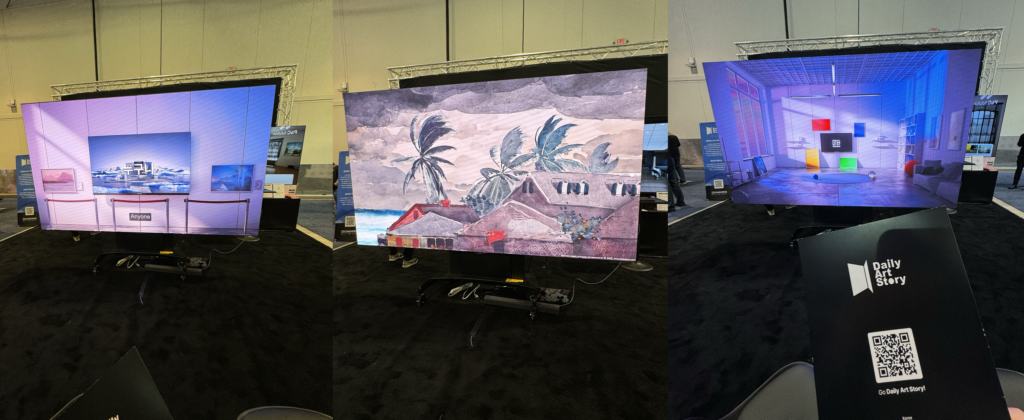
Another cool find was Daily Art Story, which can turn your TV into a Samsung Frame-style art display with a Netflix style subscription — art on your dumb tv for $20 month.
🤔 The What??
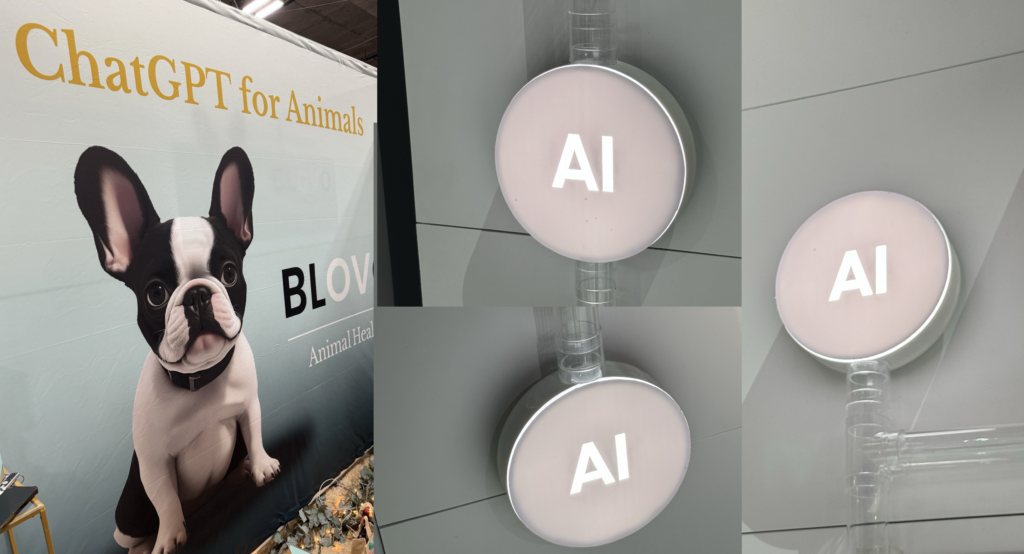
Many booths simply slapped the term “A.I.” on their products and marketing materials this year to hop on the trend. We don’t need to talk about those, but we should expect that initial buzz to subside as tangible use cases continue to emerge.
There were fewer flying cars than in previous years, but still a few. We’re talking about cars with full-on helicopter blades on the top. Of course, we don’t have the infrastructure, nor the smarts to be trusted to fly them, but it’s always amusing to see.
Of note, in The Jetsons lore, George Jetson was born in 2022 and was 40 years old when he was flying cars around the famous cartoon. So we have at least another 38 years before we’re late to flying cars based on a Jetsons timeline.
And lastly, PLANTPETZ is a Big Mouth Billy Bass for your houseplants. It’s designed to tap into the plant’s root system and react to your interaction with the plant. It makes your plant dance when you touch it, and it makes little chirps and coos while it goes. I’m not sure we want our plants to want to dance or they want to dance. But if that appeals to you, it costs $40.
🚀 The Future of Social
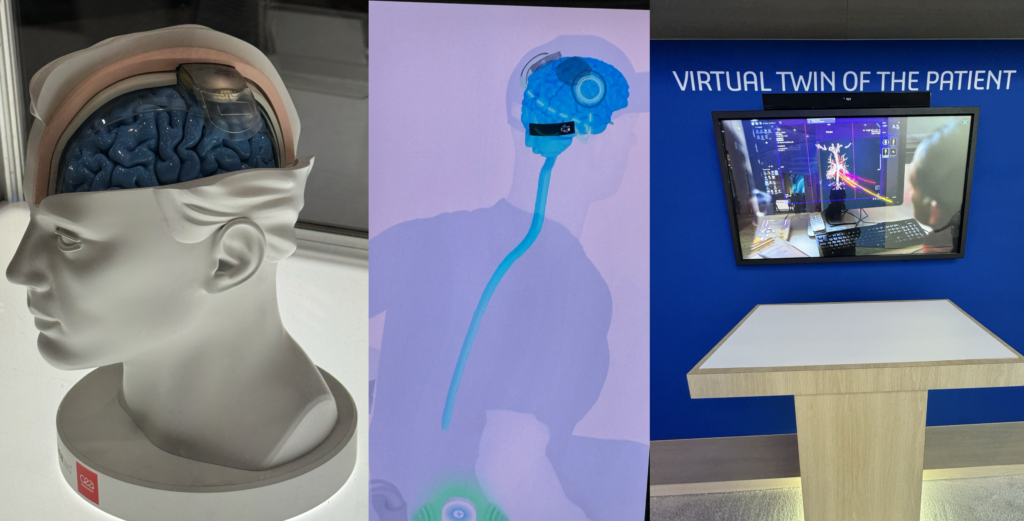
Overall, CES 2024 was another great showcase of hardware and software innovation on a global stage. From helping aging seniors to creating digital twins of our bodies, creating new ways of sourcing data in our devices to unearthing new ways to unlock them for social, it was quite the show.
When you peer through the hype and buzz, it’s not hard to discern the best parts of creativity and technology. The future of social is coming, and at TSL, we’re ready.
🎧 Listen to Greg’s Drivetime with DeRusha Interview from the Show Floor
🎥 Watch this Highlight Reel
@swangreg You can’t spell CES without A.I. in 2024. #ces #capcut #fyp #technology #robots
♬ Funk Hip Hop Music(814197) – Pavel
And catch Greg’s favorites from CES 2024 on Threads here.

